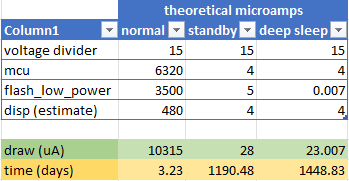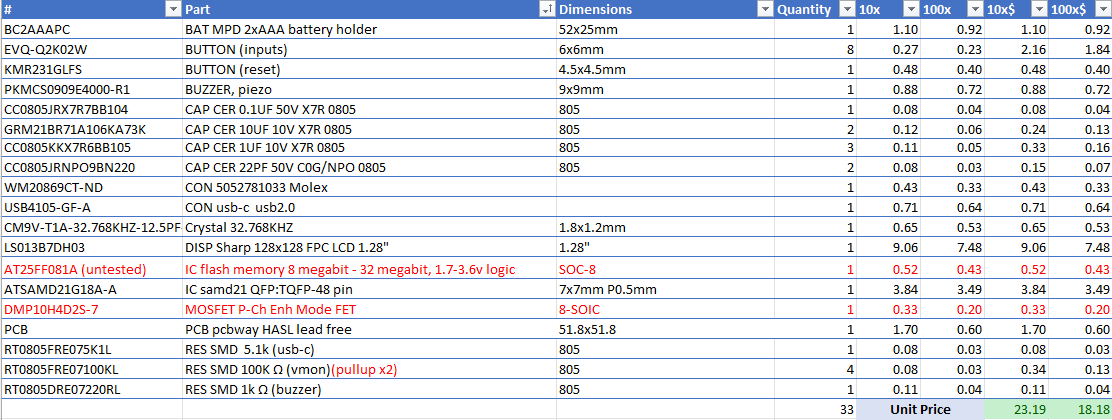After running some low power tests, it seems that the display will operate without issue down to 2.1v or so before the NiMH cells fully discharge. The boost-converter was primarily for driving a high enough voltage to the display, and optionally allowing for easier to source flash chips that operated on 2.6-3.3v logic.
In the past I observed flashing when the screen polarity is flipped, which the Adafruit provided library was doing every few refreshes, at 3.3v-5v VDD this polarity flip is not visible, but on lower voltages (as the battery discharges) the polarity flip update causes the screen to visibly clear and blink. Avoiding this polarity refresh during minigames can be solved in software, or potentially skipped entirely (the datasheet for the 128x128 version does not include documentation of this feature, though the higher res panel datasheets do, perhaps it's not required on the smaller model?).
Using only battery level voltage means the flash chip needs to support r/w operations down to 2v or so - there are SPI chips that do this (at the expense of data transfer speed) - but there are less of them and finding a variety of 16 megabit chips has been tricky. This size is arbitrary at the moment, switching to more available 8 megabit chips might be fine depending on the total graphics size.
Lastly going to experiment with disconnecting the voltage divider (with a p-channel mosfet) which is theoretically consuming 15 uA during device idle. This accounts for approx. half of the theoretical power consumption in standby.
 Waiting on the next revision to use a CurrentRanger to measure normal and sleep current. Rough estimations observing the 800 mah NiMH cells drain in about 48 hours suggests that current draw is approx 16 mah at the moment. Either the cells were not fully charged to 800 mah or a samd21 configuration issue or other source causing about 60% more power draw than expected.
Waiting on the next revision to use a CurrentRanger to measure normal and sleep current. Rough estimations observing the 800 mah NiMH cells drain in about 48 hours suggests that current draw is approx 16 mah at the moment. Either the cells were not fully charged to 800 mah or a samd21 configuration issue or other source causing about 60% more power draw than expected. Current BOM: (red indicates changes from previous design)

 NanoCodeBug
NanoCodeBug
Discussions
Become a Hackaday.io Member
Create an account to leave a comment. Already have an account? Log In.